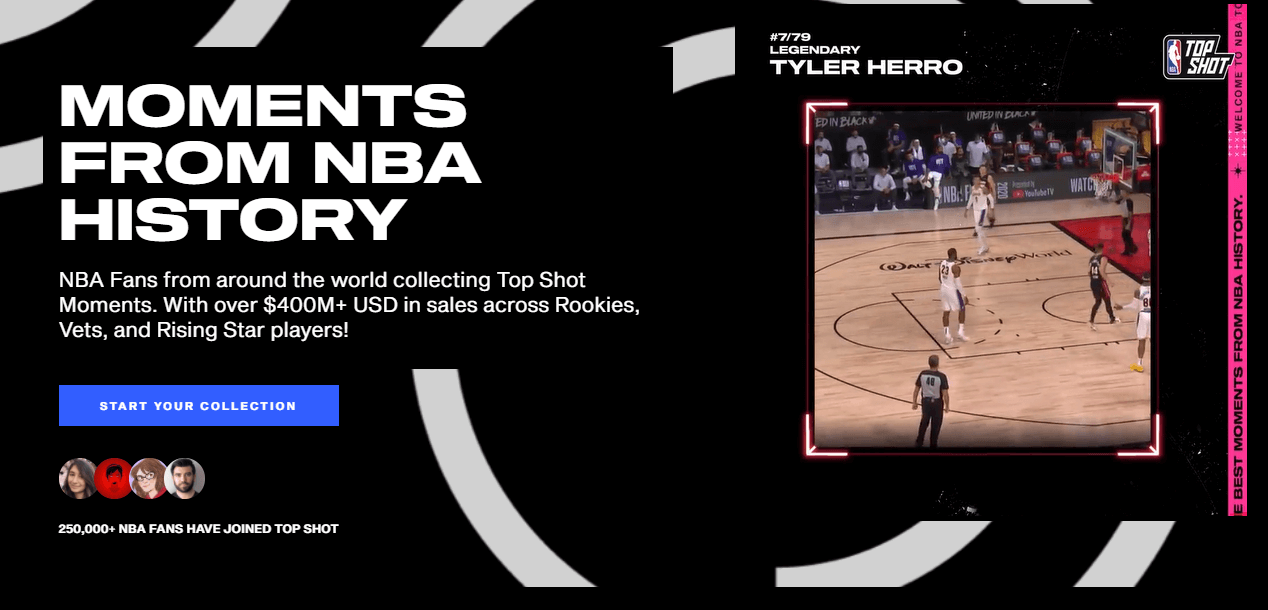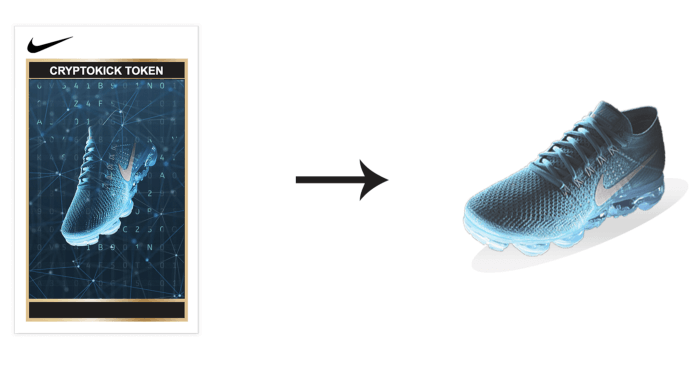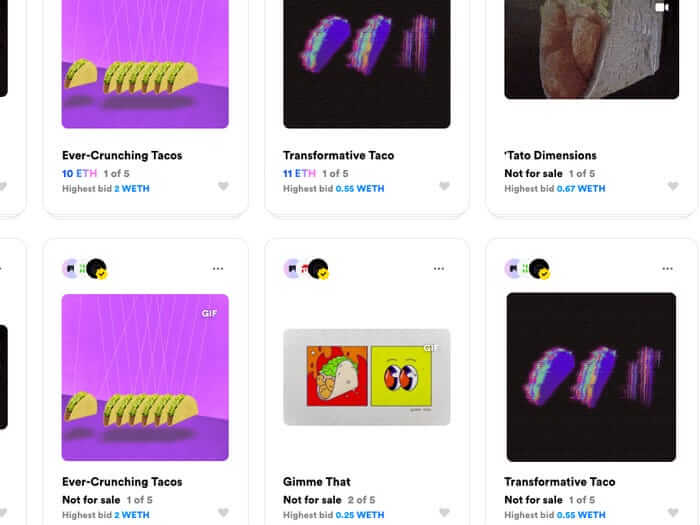The GIF that Keeps on Giving: Why Brands Should Keep an Eye on NFTs

NFTs (non-fungible tokens) are really having a moment. Well, they’re having lots of moments, from art to music to sportswear, and some of those moments are even for sale.
The blockchain-backed burgeoning business of digital memorabilia can be hard to wrap your head around, and with good reason. It’s a market that is still being defined and almost certainly a bubble that will burst. Still, brands both large and small can use NFTs for fun and profit. Whether your brand is looking to tentatively test NFT waters, or you’d prefer to be a sideline spectator, watching while everyone else cannonballs or belly flops, you need to know what NFTs are and how brands are using them.
What Is an NFT?
Put succinctly, an NFT (non-fungible token) is similar to a proof of purchase in the form of a unique code, stored and protected on a shared public exchange. It represents something non-physical that you and only you own, like a piece of digital art, a video clip, or even an experience. (Yes, really.) There may be imitations, but there’s only one original — and it’s yours.
With Beeple’s digital NFTs bringing big bucks at Christie’s, and gasp-worthy spectacles like setting an original Banksy on fire to transfer its value to NFT form, you’d be forgiven for associating NFTs solely with digital art. With art selling as art does, at sky-high prices, you might not see a connection between NFTs and marketing and selling products to the average consumer. But, like anything buzzworthy, bucks and banter among the monied, there are angles and options that merit a deeper dive for the rest of us playing the long game.
The Law of Non-Diminishing Returns
One of the most attractive upsides to NFTs for brands is the same thing that is beneficial to artists: NFTs can generate residual profits almost indefinitely. On one hand, this means that artists — who notoriously struggle to get what their work is worth — don’t have to watch helplessly as their art changes hands for ever-increasing sums. NFTs can provide them with residuals at every transaction. The same is true for brands. Why sell a product and profit just once when you can have the buyers sell it for you in perpetuity?
If there’s one lesson we learn over and over again as we produce content that converts, it’s that consumers will continually engage with the brand content that speaks to them personally about the things they need, want and desire. They seek out products that make them feel special and are particularly drawn to the unique, the curated and the exclusive. This is where NFTs can become personalized content taken to the next level. For brands, that means ongoing brand engagement over the immortal life of an NFT, potentially across a multitude of owners — all from a single conversion.
Let’s take a look at some of the ways brands are already using NFTs to engage their audiences.
Thanks for the Memories — Nostalgia as NFTs
Collectors know the sentimental pull of their favorite pieces. Perhaps your collection of beloved whatnots started with a family heirloom, and you’ve lovingly added to it over the years. Then, when the staff from TLC’s Hoarders eventually shows up at your house, you and the show’s psychologist have a poignant TV moment as they try to help you understand that the memories and good times aren’t IN the object. They’re in your HEART.
Well the joke’s on you, TV psychologist. With NFTs, the memory IS in the object, and the object isn’t an object at all — how’s that for an existential crisis? Millions of people may have seen a history-making event, but only one person can own the NFT of that moment. And you can collect as many of those moments as you can afford without having to dust a thing.
NBA Top Shot’s success in the NFT market proves that many people experience nostalgia via sporting events, and they’re willing to pony up to own them, buying virtual trading cards of their favorite plays. Not everyone can afford a six-figure LeBron dunk shot, but chances are, brands are going to be willing to explore price points of all kinds for crypto collectibles and digital memorabilia.

Pop culture brands that have spawned cult followings (think: Star Wars, Star Trek) will be able to produce exclusive souvenirs and collect downstream revenue for years, which might take the sting out of watching their vintage action figures sell for more than cars on eBay. The rarity and desirability is built into the NFT.
There’s no limit to the ways theme parks could make magical memories, from special-access NFT tickets to souvenirs and beyond. Every year, wedding proposals take pace at Disney under the fireworks — how about buying the NFT of the fireworks show for your anniversary? (You’re welcome, Disney.)
NFTs: The Trend of the Season
Fashion and luxury brands of the world know they want to use NFTs, but so far, they’re still feeling their way around. Of course, what better way to start kicking the tires than with sneakers?
Sneaker designers are finding success selling exclusive shoe designs via NFT, in the same way one might sell limited edition art prints. Nike is leading the pack, and is seemingly poised to dunk on everyone with their CryptoKicks.

Making use of patents issued to the company in 2019, Nike is laying the groundwork for CryptoKicks to go beyond both digital and physical shoes.
CryptoKick tokens have “genomes” that can be crossbred with other tokens to create hybrids — provided you have breeding rights, which are also purchasable — effectively becoming digital pets. Some of the resulting crossbreeds may be created as real shoes, in which case, the owners (parents?) of the respective NFTs would be notified. Nike is considering a gamut of other possibilities, including augmented reality treasure hunts that offer digital products as prizes.
If Nike’s plan takes off, they will end up generating multiple sales and upsells from individual NFTs, gamifying the experience, and possibly selling related personalized products. That’s a lot of potential extra return on an item that won’t need stocking, shipping or shelf space.
Consumers who purchase or join NFT-related activities need to have NikePlus accounts, which link users to their digital assets. Those users will generate buckets of quality data for Nike, which, in the face of restrictive new data privacy laws, may be the most valuable part of this proposition.
You don’t need to be a fashion giant like Nike to get in on the NFT action. In fact, you don’t even need to make, you know, real clothes. Digital fashion brand The Dematerialized designs clothing that exists only in the virtual world. You can buy an asset for display within their virtual environment, “wear” it in a photograph, or port it into a video game for your avatar.
NFTs for the Greater Good
Some brands, like the two highlighted here, seem to be taking the safe route and sliding sideways into NFTs by creating unique digital art for purchase with all residual funds going to charities. It’s a fairly low-cost way to associate a company with on-brand charitable causes and generate goodwill.
Taco Bell dropped its first round of digital collectibles to coincide with the hotly anticipated return of potatoes to their menu. The 25 pieces sold out as fast as they dropped, with the revenue and residual income from the adorably named NFTs going to their scholarship fund.

Another example of this type of charitable effort that is in no way a humorous juxtaposition to the above campaign is the, um, toilet paper-themed art for sale by Charmin. The art, aptly named NFT(P), will raise funds to support DirectRelief (which is also in no way funny in context), an organization that assists people living in poverty.
Introducing NFT(P) by Charmin.????
Sometimes a better bathroom experience goes beyond the seat, that’s why were rolling out the first-ever NFT art by a toilet paper brand!
Bid on the digital art using the link below. All proceeds donated to @directrelief!https://t.co/hZkNwEWbDG pic.twitter.com/uJgWtPQDvy
— Charmin (@Charmin) March 17, 2021
NFTs Are Reshaping Consumer Experiences
One thing to look forward to as digital memorabilia changes hands is the non-paper trail that assets create. NFTs will eventually develop their own provenance of owners, fully provable via blockchain transactions. That opens the possibility of niche collectors and fans buying tokens that once belonged to their favorite athletes or performers, with prices ebbing and flowing along with the popularity or notoriety of its stewards.
Part of the fun of the NFT trend is that no one knows exactly what will happen next. Brands are making up the rules as they go along, turning the traditional idea of “selling a product” on its head, and producing content in a way that allows almost limitless imagination. As always, consumers will dictate demand and desirability; and what is saleable and what isn’t. For now, it’s Free Swim for everyone: It’ll get rough in there without lanes, but it sure will be a blast.
If you want your brand’s content to generate buzz while it grows revenue, let’s talk.